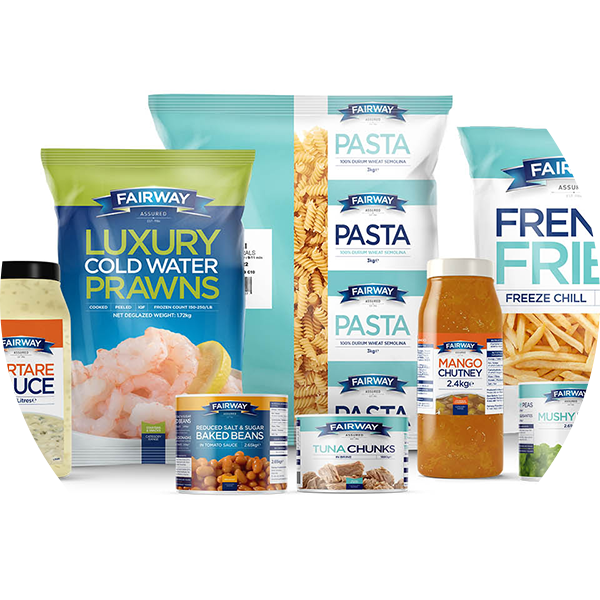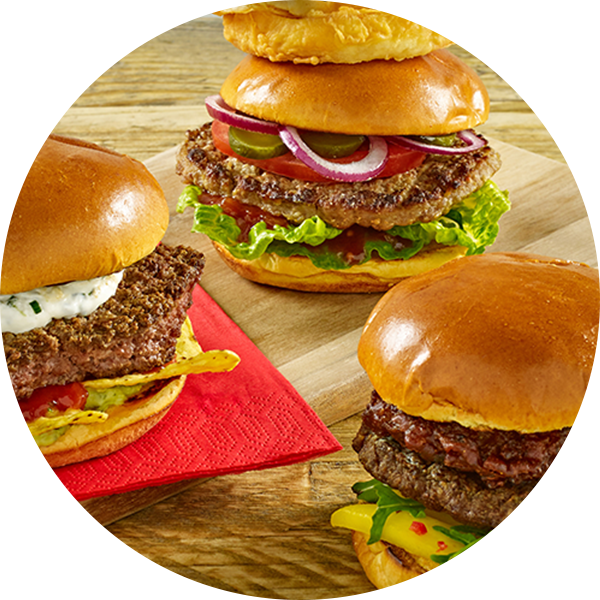



1. Carbon truths
Carbon miles are the new calories – and consumers want to ‘eat’ less. Climate-friendly diets gain traction, centred on foods with the smallest carbon footprint. Businesses will respond with increased transparency regarding emissions, contributing to an increase in carbon labelling’ (despite the fact that carbon along the supply chain is difficult to measure). And it’s not just about carbon reduction, or being ‘carbon neutral’; now the goals are ‘carbon negative’ or ‘active’.
2. Lab to fork
Cultivated protein (aka cell-based or lab-grown) is the next frontier in motherless meat. There’s fast-paced development in both cellular (using animal cells) and acellular (plant-based) processes. Regulatory hurdles are jumped, and price points lowered – leading proponents to say it’s finally commercially viable at scale. And there’s an opportunity to explore beyond meat; companies are using processes like precision fermentation to make lab-grown milk, honey, cheese, chocolate and more.
3. Sea farms
Sea plants are being hailed as a potential, sustainable food solution that can replace fish, grains, meat and even plastic … Seaweed, dulse, kelp and samphire appear on more and more menus – from QSR to fine dining. Microalgae is meanwhile used to make anything from milk to burger patties. And chefs and marine scientists alike are getting excited about zostera marina, a seagrass being harvested for its grains and lauded as ‘the rice of the sea’ – and the next big superfood.
4. Seamless order and delivery
Contactless and friction-free experiences are the holy grail of foodservice. Digital kiosks, voice recognition and cameras are enabled to make the ordering process quick and seamless; meanwhile, cashier-less checkouts, lockers, vending machines, drive-through and curbside collection make picking up orders easier than ever. Robots are used more widely to do everything from meal prep to delivery. And speaking of delivery, disruption continues at pace – from apps that promise delivery in minutes to drone delivery to precision drop-offs with the help of geolocation tools.

5. Same but healthier
The backlash against ‘ultra processed’ and HFSS (high fat, salt, sugar) foods continues to grow – but consumers still want to enjoy their favourite foods. Cue a surge in innovation around ‘better for you’ alternatives. Brands look to ‘natural sweeteners’ and sugar alternatives, like allulose, to reduce the glycaemic impact of products; they also turn to the likes of swap outs (e.g. grain-free flour) and salt substitutes. And they drive to get as close to ‘clean label’ as possible, so products that are perceived as highly processed are reformulated with fewer, all-natural ingredients.
6. kids
Childhood obesity is a crisis, and most agree too much of kids’ caloric intake comes from ‘ultra processed’ foods high in fat, sugar or salt (HFSS). So parents scrutinise labels and brands are reformulating kids’ products to make them healthier, with targeted nutrition for toddlers to teenagers; that means all-natural ingredients, hidden veggies,
7. fine eating, not dining
For many diners, the future lies in ‘fine eating’ rather than ‘fine dining’ – i.e. focus on the food, without the formality. This gastronomy-forward, fuss-free approach is driving a resurgence in French-style bistros and brasseries, gourmet wine bars and the new generation of gastro pubs – same Michelin-grade food as any leading restaurant, but in a more relaxed setting … you can even slip your shoes off.
8. look east
The cultural influence of East Asia is growing at pace. Consumers can’t get enough of the food, fashion, film and music of Korea & Japan in particular. Japanese food, already well-loved globally, is explored further – and cooks get creative with cuisine mashups (e.g. Japanese-Italian), sweet formats (mochi donut, anyone?) and pantry staples. Meanwhile, Kculture sweeps the world; indeed 26 Korean words have been added to the Oxford English Dictionary. The K-craze draws consumers to Korean dishes like tteokbokki, bulgogi, fried chicken and Korean corn dogs.


9. sensory exploration
The pandemic created a newfound appreciation for our senses, not least because loss of taste and smell are well-documented Covid side effects. So now, dishes are elevated with big & bold flavours – sour, salt, spicy and umami; look out too for kokumi, the savoury sensation described as ‘the next umami’. Brands also play with the sense of smell, using scents to transport us to ‘happy places’. And let’s not forget the sense of touch! After being deprived of physical interaction for so long, we want to use our hands and play with our food.
10. novel nostalgia
Sometimes we need to forget the world’s stresses, just for a moment, and feel like we’re kids again. Brands step up to the plate, with whimsical concepts and nostalgic experiences – arcade games, glow-in-the-dark designs, ice cream trucks and so on. And consumers seek out childhood favourites like s’mores, hot dogs, custard, jelly and ice cream floats – but this time round, with a gourmet and grown-up makeover. Think CBD-infused trifle, boozy slushies and homemade Pop-Tarts. Because indulging your inner child, doesn’t mean ignoring your gourmand side …

Produced in a BRC Grade A, specialist “chip” manufacturer in an advanced factory in Belgium, the Fairway Assured French Fries range includes the six most popular cuts, from the 7mm shoestring to the chunky 18mm fries and the ever-popular 13mm fries.
The fries are produced from several “chipping” potato varieties, including Premier, Fontane, Innovator and the trusty Bintje. They are all blanched and pre-fried to deliver a crisp golden-brown outer with a softish white/yellow inner. Keep in a fridge in unopened bags and used within 4 days.
CUT SIZES
Fairway French Fries 7mm
Fairway French Fries 9mm (3/8”)
Fairway French Fries 11mm (7/16”)
Fairway French Fries 13mm (9/16”)
Fairway French Fries Chunky (18x18mm)
Fairway French Fries Steakhouse (9x18mm)
See below a handy guide for caterers which highlights handling and frying guide for French fries.



Please see below a link to the letter announcing Mars’ withdrawal of foodservice ready-to-use sauces and rice from the end of this year.
We have had several discussions with potential replacement suppliers for Mars products, including Unilever and Premier. Both have agreed to upweight their activity nationally and locally to capture some of this volume. Both offer additional rebate support but based on the size of the volume and business type, so please pick up with their local reps for more info on this.
We see an opportunity to re-instate a selection of lines under Fairway Assured Brand to give you an edlp when targeting cost sector and pubs running to tight budgets. Your main competitors all have ranges targeting these sectors, so it is important we offer a good quality, well priced solution for you.
We had already carried out some recipe work recently but have now asked 3 suppliers to tender. We have set a target date for benchmarking and reviewing commercials of 16th November and will look to introduce ranges as early as possible in the New Year.
These are the key lines taken by members from Mars with options already in place outside of the major brands:
- THICK AND CHUNKY SALSA (already available from Shaws but looking to move into own brand)
- SWEET THAI CHILLI (already available under FW Assured from AAK, but we will include in the review)
- TEXAN BBQ (already available from AAK -Sticky BBQ, but will include in review)
- TIKKA MASALA
- TOMATO & BASIL
- KORMA SAUCE
- SWEET AND SOUR NO VEG
- BOLOGNESE
- CHILLI CON CARNE
Troy McKee Fairway
Purchasing Manager

Below was the top 10 selling lines throughout the Fairway group for the period November and December 2021. Data was taken from the ‘Sales Dashboard’ on Fairway Connect.
There are a number of Fairway Assured products which make up the top 10 and might be something for you to consider if you are selling a branded alternative.




The Food Price Index, compiled by the United Nations’ World Food Program (WFP), measures monthly changes in international food prices.
The FAO Food Price Index* (FFPI) averaged 135.9 points in October 2022, virtually unchanged from September, with the price indices of all the covered commodity groups, except cereals, down month-on-month. An upturn in the Cereal Price Index countered drops in the indices for vegetable oils, dairy, meat and sugar. With the latest updates, the FFPI has dropped 23.8 points (14.9 percent) from its peak in March this year, but remained 2.7 points (2.0 percent) above its value in the corresponding month last year.

Kindly forward comments and suggestions to: richard@fairwayfoodservice.com

